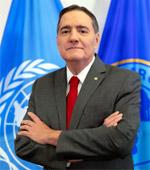Accelerating Disease Elimination
Chapter 4: How to Accelerate the Elimination
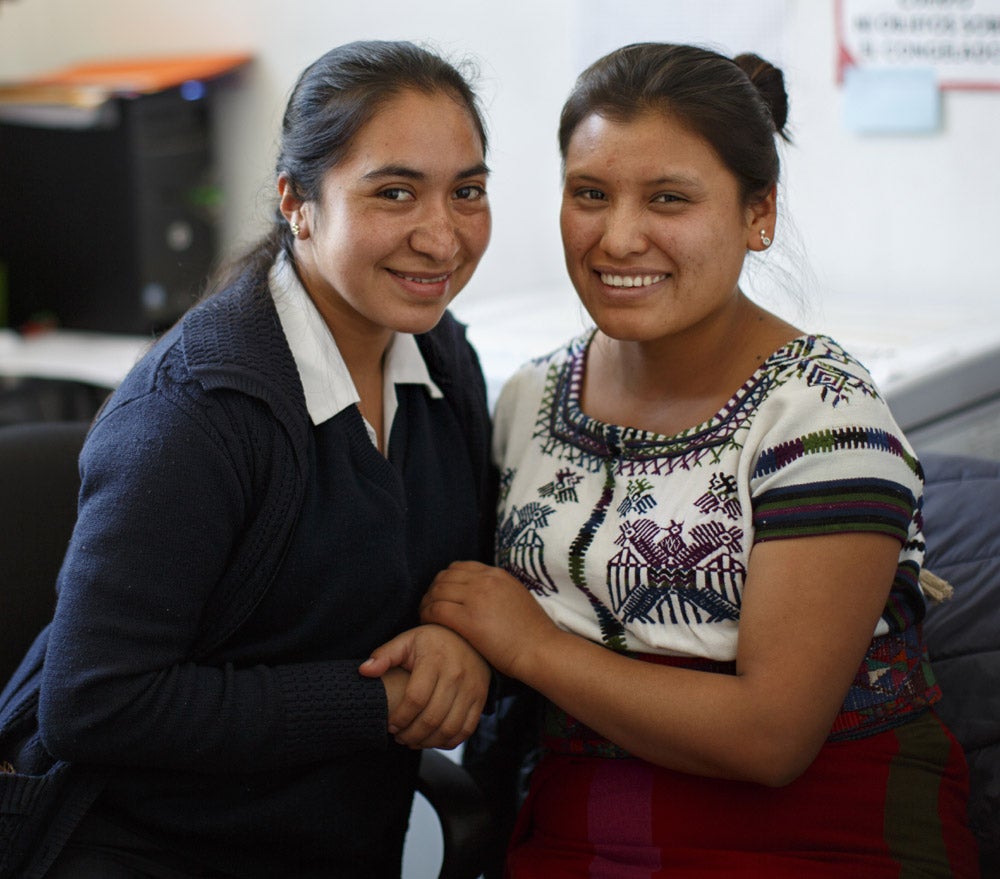 Summary
Summary
The cumulative experience of PAHO and Member States in disease elimination has yielded valuable insights into integrated strategies for disease elimination. While implementation and context vary, all strategies discussed have potential for further acceleration. Key approaches cover all four of the Elimination Initiative's lines of action and include strategies such as strengthening first level of care, supporting innovation and access to health technologies and data systems, developing equity-focused interventions, and engaging civil society. Member States are encouraged to adopt and scale up these effective strategies to meet their disease elimination targets and provide more equitable, person-centered care.
Strengthening the integration of health systems and service delivery (LINE OF ACTION 1)
Approach: Multi-disease integration with first level of care
Why is this important?
The first level of care (also called primary care) is essential for disease elimination, providing vaccines, screening, diagnosis, and treatment. It also creates an opportunity to focus on equity and address disease elimination using a life course approach. The first level of care is the cornerstone of the primary health care (PHC) strategy, which strengthens health systems and leverages multisectoral policy and action. The implementation of the PHC strategy can support communities' engagement and involvement in their own care, respecting their needs and demands.
What is currently being done?
The Elimination of Mother-to-Child Transmission Plus initiative (EMTCT+), was established in 2016 to eliminate mother-to-child transmission (MTCT) of HIV, syphilis, Chagas disease, and hepatitis B, prioritizing the first level of care. EMTCT+ has led to measurable results. For example, rates of MTCT of HIV fell from 22% in 2010 to 16% in 2019 in Latin America and from 21% in 2010 to 13% in 2019 in the Caribbean (before increasing slightly in both sub-regions during the COVID-19 pandemic) There has also been a 40% decline in new HIV infections in children (1). Eleven countries and territories, all in the Caribbean (Anguilla, Antigua and Barbuda, Belize, Bermuda, Cayman Islands, Cuba, Dominica, Jamaica, Montserrat, Saint Kitts and Nevis, and Saint Vincent and the Grenadines) eliminated MTCT of HIV and syphilis, the result of a successful implementation of EMTCT+. Belize, Jamaica, and Saint Vincent and the Grenadines are the latest countries in the Region to receive WHO elimination certification for MTCT of HIV and syphilis. To meet elimination targets, these countries focused on strengthening prevention, screening, and treatment services within the first level of care (2).
An additional strategy for implementing integrated approaches like EMTCT+ at the first level of care is training community health workers (CHWs). Helping to address health worker shortages, CHWs provide basic services like vaccinations, disease testing, health education, antenatal care, and surveillance. For example, Suriname's National Malaria Program includes CHWs who diagnose and treat uncomplicated malaria, primarily in hardto- reach areas and among mobile migrant communities (3). CHWs also played a critical role in responding to the 2022–2023 cholera outbreak in Haiti, providing prevention education, initial treatment, referrals, and surveillance support (4). Similarly, community animal health workers support initiatives aligning with PAHO's One Health strategy to control zoonotic diseases.
How can countries accelerate progress?
Countries' PHC strategies should reach communities where disease transmission persists. This includes tackling issues like distrust, insufficient intercultural approaches, and linguistic barriers (5). Also, effective practices from existing programs like EMTCT+ can be scaled up to strengthen first level of care – making sure that services like antenatal care and immunization are widely available. Improving digital health programs can also expand access. For example, many countries used telemedicine to meet demand for health services during the COVID-19 pandemic. In Colombia, 100 HEALTH IN THE AMERICAS: Accelerating Disease Elimination | 54 million people used telemedicine during the first year of COVID-19 (6), and in Peru, a multisectoral effort provided telemedicine services to serve eight isolated Indigenous communities in the Amazon (7). To scale up this type of intervention, countries must first address access to technology and implement legal regulations for confidentiality (8).
A key challenge for the first level of care is adequate health personnel. Not only is staffing availability inadequate for effective provision of integrated services, but the current system does not support a multi-professional team approach where various health professionals (for example, doctors, nurses, pharmacists, social workers) collaborate to provide a full range of services. Member States can address this by committing more resources to securing and training more staff – and supporting a comprehensive, team-based approach at the first level of care.
Approach: Improved innovation and access to health technologies
Why is this important?
Health technologies, including vaccines, diagnostics, and treatments, are essential for reducing the burden of communicable diseases. However, an array of challenges prevent access to these supplies, including lack of research and development, distribution channels in remote areas, stockouts, pricing, regulatory requirements, funding constraints, inadequate supply infrastructure, and lack of regional production. These factors can lead to shortages, delayed access, and reduced effectiveness of critical health resources. Decentralization of country-level purchasing can compound this problem, as smaller areas often lack purchasing power, causing inconsistencies in availability of certain supplies even within the same country.
What is currently being done?
PAHO and Member States work on various initiatives that help respond to current and future health needs, reduce inequities in the Region, and foster economic development. PAHO's Regional Revolving Funds (RRF) provide affordable, timely access to supplies. They also improve supply management, assist with demand planning, and prevent stockouts. An estimated 180 million people benefited from health supplies acquired through the [RRFs] in the last two years. The PAHO Innovation and Access to Medicines and Health Technologies department, and its Special Program, Innovation and Regional Production Platform strengthens capacities for innovation, development, and production of health technologies.
PAHO also helps improve the availability and affordability of medicines and health technologies. This includes supporting Member States' assessment, incorporation, regulation, management, and safe use of health technologies. PAHO also works with countries on strengthening generic and biosimilar competition and other policies and strategies to improve access to medicines. How can countries accelerate progress? Access to health technologies necessitates a comprehensive system addressing the life cycle from innovation through distribution and rational use of technologies. Further, some diseases lack necessary technologies, such as Chagas disease, which faces diagnostic challenges. Current tests are limited in effectiveness across strains and infection stages. Improved detection technology could boost diagnosis and treatment rates (9).
Advancing research and development requires political will, funding, supportive policies and regulations, and an exploration of innovative solutions. For example, expanding the use of point-of-care dual HIV/syphilis testing in maternal and child health services and promoting rapid malaria testing can accelerate the elimination of MTCT and malaria, respectively. Self-testing – available for HIV, human papillomavirus (HPV), sexually transmitted infections (STIs), and hepatitis C in some countries – can increase accessibility and early detection of these diseases. However, effective implementation requires cultural shifts and education campaigns, as seen with HPV self-testing.
Many existing technologies are not produced at affordable prices or adequate volume to meet demand. For example, the high cost of the HPV vaccine is a burden for many countries (10). More use of the RRFs can improve access to cost-effective products. The participation of 42 countries in the Revolving Fund for Vaccines saves approximately 50% on the 13 most used routine vaccines. Strengthening innovation and production ecosystems can create a more resilient and self-sufficient system. Promotion of competition, including through local and regional production, is key to overcoming challenges like the high cost of HPV vaccines (11). Also, broader use of existing tools like the Performance Monitoring Tool for National Expanded Program on Immunization can improve distribution to underserved areas (12). In 2022, Member States reaffirmed their commitment to strengthening national regulatory systems that can meet growing market demands and respond to health emergencies (13). These systems, along with crosscutting initiatives like integrated supply chain management and pooled procurement (for example, through the RRFs), can enhance the availability of essential health technologies and accelerate disease elimination efforts across the Region.
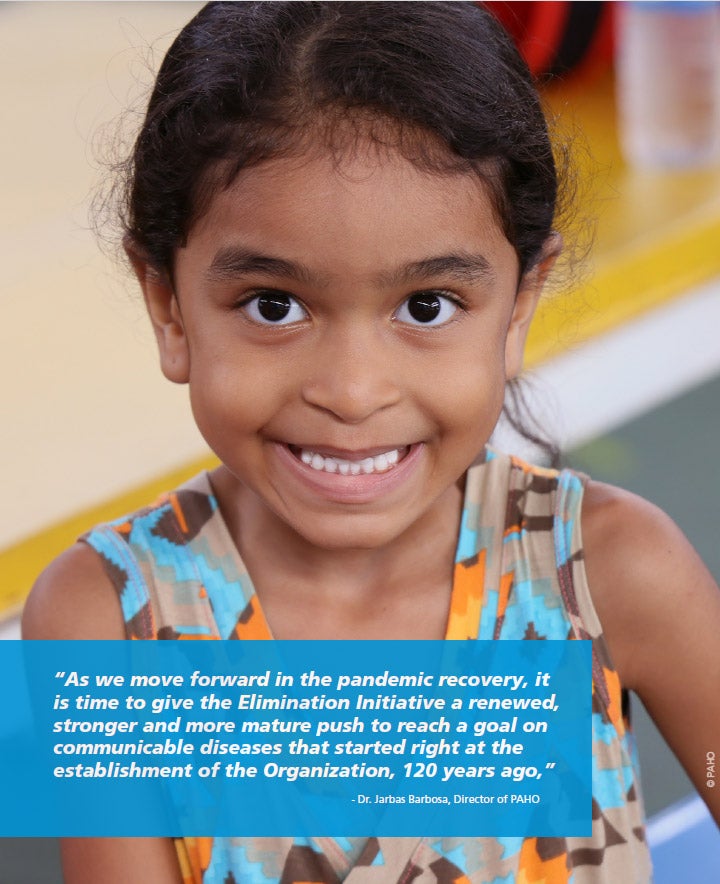
Approach: Water, sanitation and hygiene
Why is this important?
Water, sanitation, and hygiene (WASH) programs are critical in prevention and management of communicable diseases. Access to safe water and sanitation services plays a key role in eliminating neglected infectious diseases such as soil-transmitted helminthiasis, schistosomiasis, human fascioliasis, and trachoma. Beyond neglected infectious diseases, though, WASH is essential for eliminating all diseases (14). For example, safe WASH practices during childbirth can support elimination of vertical disease transmission. Also, people living with HIV are more likely to experience diarrhea, which can be life-threatening and make antiretroviral drugs less effective. Improving WASH can reduce these diarrheal episodes (15).
What is currently being done?
Many countries are updating WASH-related policies and regulations with PAHO's technical assistance. WASH strategies to address communicable diseases currently focus on improving water quality; enhancing sanitation infrastructure; promoting hygiene practices; and implementing vector control measures. While progress has been made, challenges persist, particularly in rural and low-income urban areas. For example, climate change impacts (including changing weather patterns and increased frequency of natural disasters) complicate efforts to improve WASH access, particularly among remote communities with limited infrastructure. Also, historical underinvestment and persistent social inequalities continue to hinder widespread access to these essential services across the Region.
How can countries accelerate progress?
Saint Lucia once had high levels of schistosomiasis prevalence and morbidity; after ensuring widespread access to sanitation and safe water, schistosomiasis in the country has practically disappeared (16). Other countries can follow its lead by expanding existing WASH programs to integrate prevention and management of neglected infectious diseases, as well as other vector-borne and water-related infectious diseases (17). This can be challenging as countries often have limited funding earmarked for neglected diseases. Accelerating WASH for disease elimination therefore requires multifaceted, creative approaches; partnerships between governments, private sector, and international organizations; increased funding and resource mobilization; and integrated activities involving national staff from water, sanitation, and health sectors as endorsed by the Global Strategy on Water, Sanitation, and Hygiene to Combat Neglected Infectious Diseases, 2021–2030 (18). A recent virtual WASH course with participants from five countries demonstrates the potential for such integrated efforts (19).
Strengthening health surveillance and information systems for health (LINE OF ACTION 2)
Approach: Enhancing surveillance and information systems for health
Why is this important?
Surveillance systems that allow disease monitoring – including interoperability among systems and platforms, data sharing capabilities, emerging technologies such as artificial intelligence, early detection of public health threats, and capacity-building for healthcare workers – can ensure effective data governance and accurate and timely data collection and management, especially in underserved and cross-border areas. Interconnected information systems also help evaluate the effectiveness of interventions.
What is currently being done?
PAHO, in partnership with the U.S. Centers for Disease Control and Prevention and some countries, supports the use of a single laboratory platform called the multiplex bead assay (MBA) to analyze antibodies against 50–500 different pathogens in a single blood sample. By monitoring multiple diseases that overlap in populations and geographical areas, MBA enhances understanding of transmission, monitors intervention impacts (such as vaccination), identifies susceptible populations, and helps address multiple conditions simultaneously.
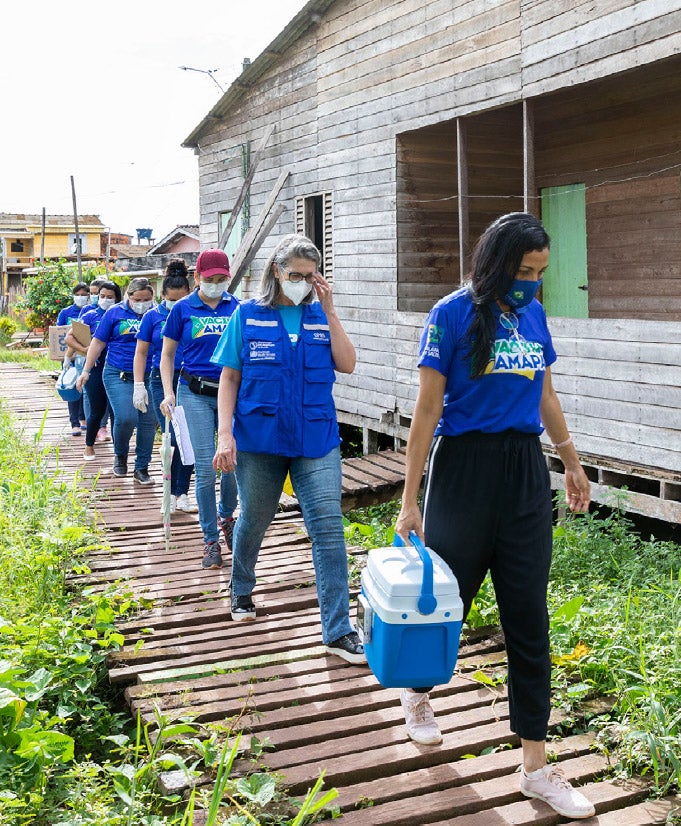 In addition, the Elimination Initiative provides more incentive to include communicable diseases in existing surveillance activities. For example, surveillance of acute flaccid paralysis has been a key component of identifying hotspots for poliovirus transmission. Other innovative surveillance efforts can also be implemented, like genomic surveillance efforts, which were expanded during the COVID-19 pandemic (20) and could also impact the Elimination Initiative. Although use varies widely among countries in the Region, the infrastructure and expertise developed for COVID-19 genomic surveillance provide valuable tools to detect pathogens and new variants, update vaccine formulations, and guide diagnostics even beyond the COVID-19 virus. Additionally, community-based surveillance efforts are being done throughout the Region. For example, the Brazilian Wildlife Health Information System engages local communities in collaborative monitoring of yellow fever potentially caused by nonhuman primates (21).
In addition, the Elimination Initiative provides more incentive to include communicable diseases in existing surveillance activities. For example, surveillance of acute flaccid paralysis has been a key component of identifying hotspots for poliovirus transmission. Other innovative surveillance efforts can also be implemented, like genomic surveillance efforts, which were expanded during the COVID-19 pandemic (20) and could also impact the Elimination Initiative. Although use varies widely among countries in the Region, the infrastructure and expertise developed for COVID-19 genomic surveillance provide valuable tools to detect pathogens and new variants, update vaccine formulations, and guide diagnostics even beyond the COVID-19 virus. Additionally, community-based surveillance efforts are being done throughout the Region. For example, the Brazilian Wildlife Health Information System engages local communities in collaborative monitoring of yellow fever potentially caused by nonhuman primates (21).
PAHO conducted a maturity assessment of information systems for health (IS4H), the first of its kind in the Region, between 2016 and 2023. Using over 240 standardized indicators, it assessed national health information systems on a scale of 1–5. It found that 42.8% of the countries are at level 1, "building awareness." They are beginning to adopt IS4H but have limited capacity to generate high-quality data. A third of the countries, 34.7%, have reached level 2, "implementing best practices." They are developing systems and managing health information effectively, but they face challenges like incomplete development of indicators and insufficient data exchange. Another 18.4% have reached level 3, "standardization and continuous improvement," reflecting advances in policies and the use of high-quality data for decisionmaking. Only 4.1% of countries are at level 4, "integration and alignment," with highly integrated information systems aligned with national and international standards. No country in the Region has reached level 5. A comprehensive report on the regional IS4H maturity assessment will be published in late 2024.
How can countries accelerate progress?
PAHO's renewed focus on IS4H is vital to the elimination of communicable diseases. Countries need to modernize their public health surveillance systems within interoperable information systems and open data platforms to allow real-time detection and timely outbreak response. This means the transition from paper-based to electronic platforms for data management, monitoring tools, and electronic health records, based on international standards. Countries also need to focus on national and cross-border interoperability of information systems and platforms for disease control, prevention, and critical data and information-sharing. Integrated surveillance will help to accelerate progress towards elimination. In many countries, diseasespecific surveillance continues to be the norm, which causes inefficiencies and duplication of efforts, particularly at the first level of care. Accelerating the introduction and expansion of innovative multi-disease surveillance platforms is urgently needed to enhance efficiency and ensure health services are responsive to the specific context and needs of populations.
Improving the availability and accuracy of data is necessary to quantify disease magnitude and health supply needs, ensuring that resources are appropriately allocated and that supply chains are aligned with the needs of the Elimination Initiative. In addition, open data platforms and information systems should include a standardized set of equity stratifiers, and data collection forms can advance to include information about an underlying condition causing a patient's death or illness. Adding such information, particularly to digital records, can ensure that countries are better able to understand the full impact and scope of communicable diseases.
Approach: Data for decision-making at all levels
Why is this important?
Strong open data platforms and systems are critical for communicable disease elimination. They enable real-tine actions, targeted interventions, efficient resource allocation, and evidence-based policy formulation. Data facilitate progress tracking, decisionmaking, and cross-border and intersectoral collaboration, leading to more effective and sustainable elimination strategies.
What is currently being done?
PAHO and Member States use epidemiological data to identify trends, assess intervention effectiveness, and guide strategic decision-making. This data-driven approach enables more targeted and efficient efforts in disease control, from vaccination campaigns to vector control, while also facilitating cross-border collaboration and addressing health equity concerns. Countries have improved their health data management through online reporting systems, enhanced data analysis capacity, improved auditing tools, and dashboards and national repositories. One example is the establishment of electronic immunization registries in 19 countries in the Region. These systems have greatly improved the ability to track immunization rates, identify coverage gaps, and pinpoint zero-dose children. In addition, PAHO has worked to strengthen vaccine-preventable disease surveillance by promoting the use of open online platforms. These advancements have fostered data-driven decision-making, leading to more effective public health strategies and improved health outcomes across the Region.
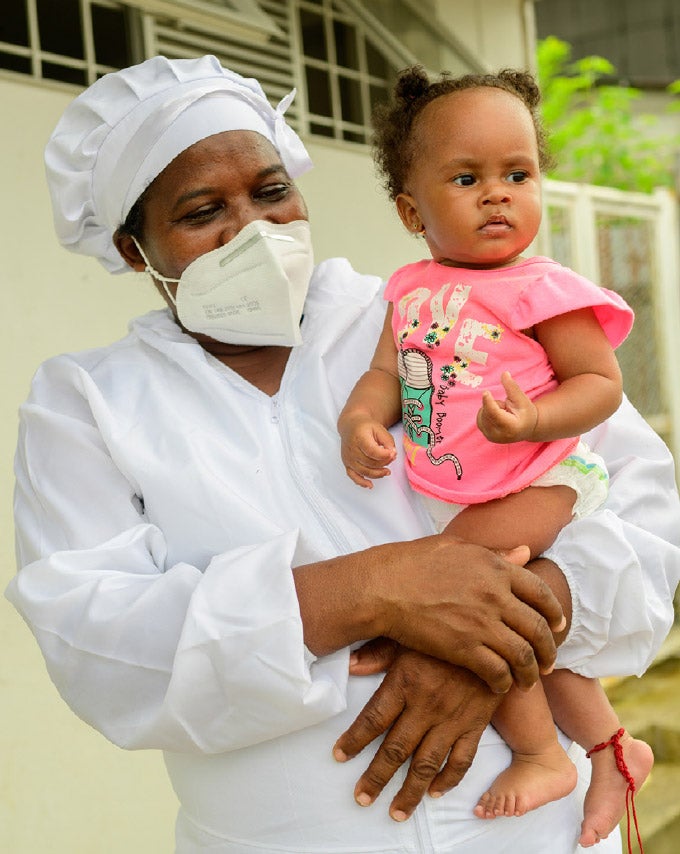 The RRFs also launched the Member State Portal in 2023 for countries to submit their estimation of needs yearly and plan their HEALTH IN THE AMERICAS: Accelerating Disease Elimination | 60 demand together, as well as provide real-time information for decision-makers. It also offers financial reports and other public health data; this tool is key to performing the core activity of the RRFs, which is to analyze and consolidate the demand to obtain better conditions for countries and territories in health technologies used to treat, prevent, or diagnose elimination targets. This technology facilitates collaboration between PAHO, disease specialists, regulators, and suppliers to support disease elimination efforts. Additionally, PAHO developed a digital dashboard to help decision-makers navigate fund portfolios in relation to critical initiatives like the Elimination Initiative.
The RRFs also launched the Member State Portal in 2023 for countries to submit their estimation of needs yearly and plan their HEALTH IN THE AMERICAS: Accelerating Disease Elimination | 60 demand together, as well as provide real-time information for decision-makers. It also offers financial reports and other public health data; this tool is key to performing the core activity of the RRFs, which is to analyze and consolidate the demand to obtain better conditions for countries and territories in health technologies used to treat, prevent, or diagnose elimination targets. This technology facilitates collaboration between PAHO, disease specialists, regulators, and suppliers to support disease elimination efforts. Additionally, PAHO developed a digital dashboard to help decision-makers navigate fund portfolios in relation to critical initiatives like the Elimination Initiative.
Data governance efforts across the Americas, based on the IS4H Maturity Assessment, revealed key challenges in the health sector. A lack of interoperability among health systems is common, hindering efficient data exchange and coordination. Many countries also face the absence of policies for adopting international standards, leading to fragmented data management. Furthermore, there are varying levels of digital transformation, with some nations advancing while others lag behind. Lastly, the Region shows low capacity in artificial intelligence and data science techniques for health data management, limiting innovation and efficiency. These gaps highlight the need for stronger policies, investments, and capacity-building in digital health.
How can countries accelerate progress?
While national aggregates are important, there is a need for more sub-national, disaggregated data for use in decisionmaking about communicable disease efforts. Member States and partners can also develop tools that present data more effectively for decision makers, program implementers, and healthcare providers. The overall approach should focus on strengthening real-time data collection and open data platforms that monitor diseases targeted for elimination. This requires integrating data from local, regional, and national sources to provide a comprehensive view of health threats.
Additionally, aligning surveillance systems with international standards and promoting the use of interoperable platforms is essential for efficient data-sharing and timely responses. Capacity building in data science is also critical, as it equips health workers to use data for early detection, risk analysis, and strategic decision-making. Finally, fostering regional partnerships and cross-border interoperability and collaboration will harmonize surveillance efforts, allowing countries to share data in real time, but also to exchange best practices and mobilize resources. This integration facilitates informed decision-making, efficient resource allocation, and improved patient care.
Member States also need to address the challenges of implementing real-time data systems – including lack of digital infrastructure and disparities in access to technology. Digital health systems can provide useful tools for collecting timely data, particularly at the subnational level and related to the most marginalized and underserved communities.
Approach: Addressing antimicrobial resistance
Why is this important?
Antimicrobial resistance (AMR) threatens effective prevention and treatment of a range of infectious diseases caused by bacteria, parasites, viruses, and fungi. For example, rates of multidrug-resistant tuberculosis (MDR-TB) and rifampicin-resistant tuberculosis (RR-TB) are growing in the Region: in 2022, there were 11 600 MDR/RR-TB estimated cases and 5428 diagnosed, an increase of 12% from 2021 (22). PAHO's Plan of Action on Antimicrobial Resistance supports Member States to take necessary actions to prevent and treat communicable diseases by using safe, effective, affordable, and quality-assured medicines and technologies (23).
What is currently being done?
Countries are making steady progress in building capacity to monitor and contain AMR. Presently, 20 countries are participating in the Latin American Network for Antimicrobial Resistance Surveillance (ReLAVRA). ReLAVRA holds meetings with its members on a regular basis for the exchange of information on resistance surveillance in the countries. This helps Member States obtain routine data to monitor the magnitude and trend of AMR. ReLAVRA also works on the introduction and scale-up of new technologies for tracking AMR (24). These efforts are in direct alignment with the Elimination Initiative – particularly its efforts to strengthen health surveillance and information systems.
How can countries accelerate progress?
To accelerate progress in AMR surveillance for communicable disease prevention, elimination programs should focus on improving data collection and sharing through standardized digital platforms, implementing advanced laboratory techniques like rapid testing, and using a One Health approach to integrate surveillance across human, animal, and environmental sectors. Programs can also leverage artificial intelligence for data analysis and predictive modeling while building capacity of data and surveillance teams to detect and respond to AMR threats.
Addressing the environmental and social determinants of health (LINE OF ACTION 3)
Approach: Use available tools to measure and address equity
Why is this important?
Social determinants of health encompass the non-medical conditions that affect health outcomes. They are the ways in which people are born, grow, work, live, and age, as well as the broader forces shaping daily life, including economic policies, social norms, and political systems. Research indicates that social determinants of health can account for 30–55% of health outcomes (25). By addressing the complex web of factors that influence health outcomes, communicable disease programs can implement more effective, equitable, and sustainable approaches.
What is currently being done?
Existing tools are currently being used by program implementers, designers, and researchers in PAHO Member States to measure inequity within communicable disease programs. These include the WHO Health Equity Assessment Tool (26), the Innov8 tool, and PAHO's website tracking progress towards the Sustainable Development Goals (particularly the section analyzing progress and inequities related to the third goal, both regionally and nationally) (27). Some equity-based analyses have already prompted tailored interventions. For instance, recognizing the high tuberculosis risk in prisons has led to enhanced screening, diagnosis, and treatment efforts in these settings (28).
How can countries accelerate progress?
Introducing simpler, more efficient checklists could increase the application of equity tools across countries and health areas. Consistent and more widespread use of these resources would help programs identify mechanisms leading to vulnerability, moving away from one-size-fits-all approaches. Also, accessing and using more community-level data would help PAHO and Member States enable focused, tailored disease elimination strategies that address systemic barriers. For example, those living in remote areas of the Amazon may have multiple health issues they need to address in one visit, so may need fully integrated services that address screening, diagnostics, treatment, and other services in a single visit. Another example is single parents, who may not have access to weekday vaccination clinics. Programs could adapt and reach these groups more effectively by offering clinics in shopping centers or adjusting clinic hours. Tailored strategies like this can improve access to various health services for marginalized groups by adapting to their specific needs and circumstances.
Approach: Use an intercultural perspective
Why is this important?
Using an intercultural perspective helps ensure that health interventions are culturally appropriate, address disparities, and build trust among marginalized communities. By considering various cultural beliefs, traditional practices, and communication styles, disease elimination efforts can be more effective, equitable, and sustainable across the diverse Region.
What is currently being done?
PAHO Member States unanimously approved the 2017 Policy on Ethnicity and Health and the Strategy and Plan of Action on Ethnicity and Health 2019-2025. These build on earlier initiatives like the 2006 resolution on Health of the Indigenous Peoples in the Americas (29). In 2023, PAHO supported a World Health Assembly resolution on Indigenous Peoples' Health (30). These policies promote an intercultural, participatory approach to health, aiming to incorporate Indigenous perspectives and eliminate health disparities affecting these communities in the Americas.
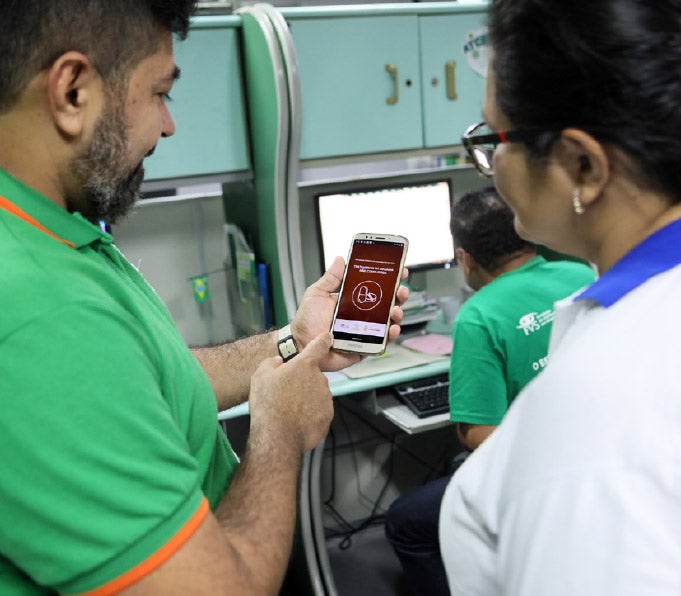 Many countries throughout the Region have also established intercultural health policies and programs. For example, the Plurinational State of Bolivia has integrated traditional medicine into its national health system. Its National Intercultural Community Family Health (SAFCI) policy integrates traditional medicine into the public health agenda, recognizing Indigenous healing practices alongside modern medicine. It has also incorporated traditional midwives into the healthcare system to promote intercultural dialogue and lead to better health outcomes (31).
Many countries throughout the Region have also established intercultural health policies and programs. For example, the Plurinational State of Bolivia has integrated traditional medicine into its national health system. Its National Intercultural Community Family Health (SAFCI) policy integrates traditional medicine into the public health agenda, recognizing Indigenous healing practices alongside modern medicine. It has also incorporated traditional midwives into the healthcare system to promote intercultural dialogue and lead to better health outcomes (31).
How can countries accelerate progress?
To include populations in situations of vulnerability in the Elimination Initiative, national strategies should integrate and scale up intercultural approaches. Studies in Colombia on participatory healthcare models among Indigenous communities highlight the importance and effectiveness of community consultation regarding vaccines, treatments, and disease control efforts (32, 33). PAHO's Vaccine Action campaign in the Plurinational State of Bolivia, targeting low COVID-19 vaccination rates, also exemplifies this approach. The initiative addressed vaccine hesitancy and access issues in remote Indigenous communities, using diverse and culturally relevant strategies like community dialogue, workshop, radio announcements, and performances. The result was increased childhood vaccine acceptance rates, demonstrating the importance of cultural sensitivity and diverse communication in improving public health outcomes (34). Community engagement can be enhanced by creating welcoming environments with inclusive signage and interpretation services. They can also integrate traditional healing practices and develop culturally adapted health education materials. Regular meetings between healthcare providers and traditional healers at the municipal level can promote dialogue and adapt services to local needs, ultimately improving the initiative's reach and effectiveness.
Approach: One Health
Why is this important?
One Health is an integrated approach that optimizes the health of people, animals, and ecosystems, and can facilitate disease elimination at the local level. During the COVID-19 pandemic, animal disease labs were repurposed for human testing, demonstrating this potential. Similarly, human health services can manage animal health supplies, like rabies vaccines for dogs. This integration enhances local capacity for environmental, human, and animal health services, supporting the goals of the Elimination Initiative.
What is currently being done?
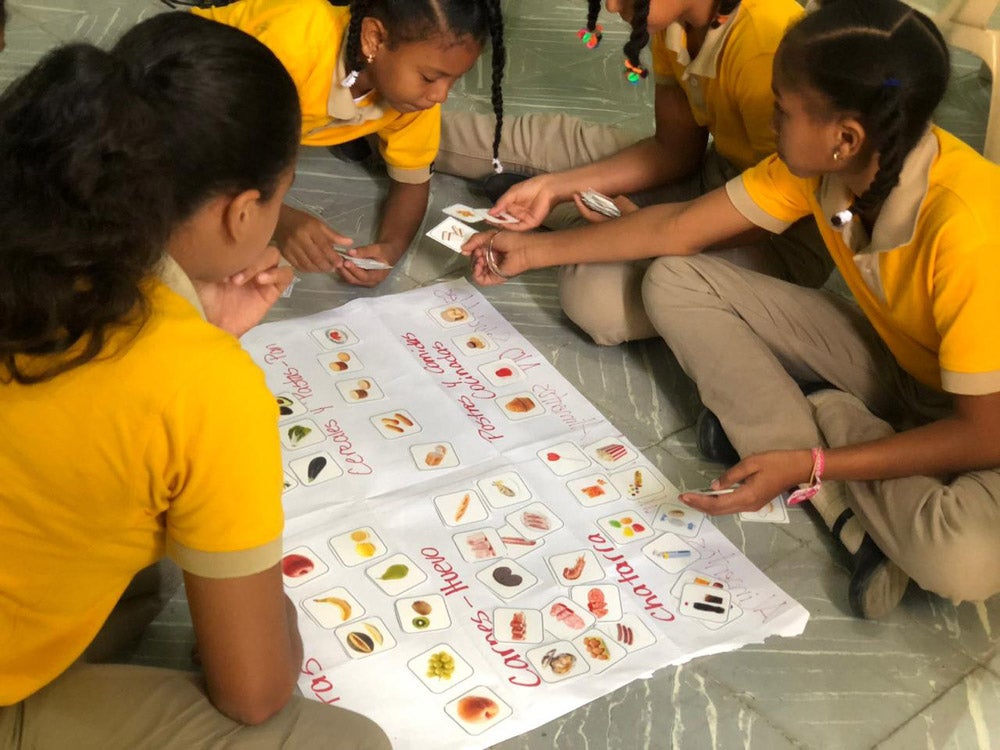 In 2021, PAHO Member States adopted a One Health policy to address current and future health challenges in the Region (35). In addition, the Elimination Initiative is aligned with the global One Health Joint Plan of Action (2022–2026) recommendations related to zoonotic, neglected tropical, and vector-borne diseases (36). Practically, One Health involves human and animal health sectors collaborating at country and community levels for surveillance, cross-reporting, and prevention activities that directly affect human health, such as deworming animals to prevent human diseases like cystic echinococcosis/hydatidosis and fascioliasis.
In 2021, PAHO Member States adopted a One Health policy to address current and future health challenges in the Region (35). In addition, the Elimination Initiative is aligned with the global One Health Joint Plan of Action (2022–2026) recommendations related to zoonotic, neglected tropical, and vector-borne diseases (36). Practically, One Health involves human and animal health sectors collaborating at country and community levels for surveillance, cross-reporting, and prevention activities that directly affect human health, such as deworming animals to prevent human diseases like cystic echinococcosis/hydatidosis and fascioliasis.
Several countries have national One Health strategies – including the Plurinational State of Bolivia and Guyana. Other countries use the One Health approach in responding to specific diseases. For example, coordinated efforts by veterinary, environmental, and public health services in several countries – including Guatemala, Honduras, and Nicaragua – have led to significant reductions in rabies cases through dog vaccination campaigns and community education. Also, to respond to Chagas disease, collaborative programs in affected countries – including El Salvador and Honduras – focus on improving housing conditions, vector control, and health education.
How can countries accelerate progress?
Key strategies for accelerating the One Health approach include improving surveillance systems, increasing funding, focusing on prevention, addressing antimicrobial resistance, and strengthening policies. Success hinges on cross-sector collaboration, cross-border cooperation, and long-term commitments to these integrated efforts. Also, when implementing a One Health approach in disease elimination initiatives, programs must consider cultural aspects affecting traditional animal health, production, and food safety practices within local communities.
Approach: Address climate change
Why is this important?
Climate change has an enormous impact on communicable diseases. Rising temperatures and changing precipitation patterns expand the range of vectors like mosquitoes, introducing diseases to new areas or intensifying transmission in endemic regions. For example, recent estimates projected that the additional number of people at risk of malaria infection due to climate change in South America will rise from 25 million by year 2020 to 50 million by 2080 (37). Climate-induced events like droughts and floods can force migrations, exposing populations to new pathogens and poor living conditions, as seen in the recent cholera outbreak in Haiti. Other environmental factors influencing disease spread include access to clean water, air quality, deforestation, and food systems. These interact with social and economic determinants, creating complex challenges.
What is currently being done?
PAHO and countries in the Region are actively addressing climate change's impact on health through the Climate and Health Program, which supports countries in assessing health vulnerabilities, developing adaptation plans, and strengthening climate-resilient health systems. Additionally, PAHO is working on improving climate-informed disease surveillance systems and early warning mechanisms to better predict and respond to climate-sensitive disease outbreaks. PAHO and Member States promote the inclusion of health considerations in national climate change policies and climate finance for health-related projects.
How can countries accelerate progress?
Addressing climate change and environmental health determinants is vital for sustainable disease control and aligns with the One Health approach. Key strategies for climate change action related to disease elimination include strengthening political commitment, enhancing cross-sector collaboration, increasing funding for climate health initiatives, and building local capacity. By implementing these strategies collectively, countries in the Americas can create more favorable conditions for elimination, improve health system resilience, and better protect those living in situations of vulnerability.
Strengthening governance, stewardship, and finance (LINE OF ACTION 4)
Approach: Intergovernmental coordination
Why is this important?
The Elimination Initiative demands effective coordination among various government institutions and ministries, including health, finance, education, environment, agriculture, foreign affairs, science and technology, and trade. Within the health sector itself, multiple groups must collaborate, ranging from maternal and child health to health systems strengthening and surveillance. This coordinated effort facilitates resource-sharing, standardized monitoring, policy alignment, and a unified strategy to maximize the initiative's impact. Expanding beyond the health sector and integrating with other interventions fosters joint ownership of the initiative and enhances its long-term financial sustainability.
What is currently being done?
The Elimination Initiative uses the Health in All Policies approach, a collaborative policymaking approach that systematically considers health implications across all sectors. Also, several countries – Brazil, El Salvador, and Honduras – have established national intergovernmental plans for disease elimination.
In 2023, Brazil established the Interministerial Committee for the Elimination of Tuberculosis and Other Socially Determined Diseases (CIEDDS). Coordinated by the Ministry of Health and involving 14 ministries, this committee aims to promote inter-sectoral actions to eliminate diseases strongly influenced by social determinants, particularly those affecting those living in situations of vulnerability. CIEDDS is developing a National Program for the Elimination of Socially Determined Diseases, focusing on many of the diseases in the Elimination Initiative, such as MTCT of HIV, syphilis, Chagas, and hepatitis B; tuberculosis; leprosy; and malaria. This initiative represents a coordinated governmental effort to address both medical and social factors contributing to these health issues in Brazil (38).
Also, in February 2024, El Salvador launched a national plan to prevent, control, and eliminate tropical diseases, and established an intersectoral National Commission to implement the plan. Developed using a One Health approach, the plan aims to accelerate efforts in 11 diseases, some of which are in the Elimination Initiative, such as Chagas disease, soil-transmitted helminthiasis, malaria, human rabies transmitted by dogs, and leprosy. The commission includes representatives from government, academia, and PAHO, ensuring comprehensive care encompassing human, animal, and environmental health (39).
Also in July 2024, the Honduras Ministry of Health, with support from PAHO, established a national intersectoral committee to focus on disease elimination. The committee revised Honduras's past success in eliminating diseases and focused on diseases with elimination potential – including malaria, human rabies transmitted by dogs, leprosy, congenital syphilis, congenital Chagas disease, and cervical cancer – and outlined future steps to accelerate national efforts in eliminating these diseases and improving data collection in the country (40).
How can countries accelerate progress?
Establishing or engaging with high-level steering groups or task forces, with representation from multiple stakeholders, will enhance intergovernmental collaboration for disease elimination. Lessons from countries that have successfully established intergovernmental task forces for multi-disease elimination can guide similar initiatives. Integrating elimination goals into national health plans will strengthen sustainability and secure political and financial commitments.
Reinforcing subnational actions led by governors and mayors will enhance stewardship and leadership, addressing the specific needs of communities affected by communicable diseases through an intersectoral approach. Leveraging ongoing strategies like health municipalities presents an opportunity to accelerate progress toward elimination targets. Additionally, coordinating cross-border health initiatives among countries will further bolster efforts toward achieving these goals. To ensure sustained financial support, countries should increase domestic funding for disease elimination by reallocating national health budgets and securing additional funds from national development programs. Innovative financing mechanisms can help bridge funding gaps and maintain momentum.
Approach: Public–private partnerships
Why is this important?
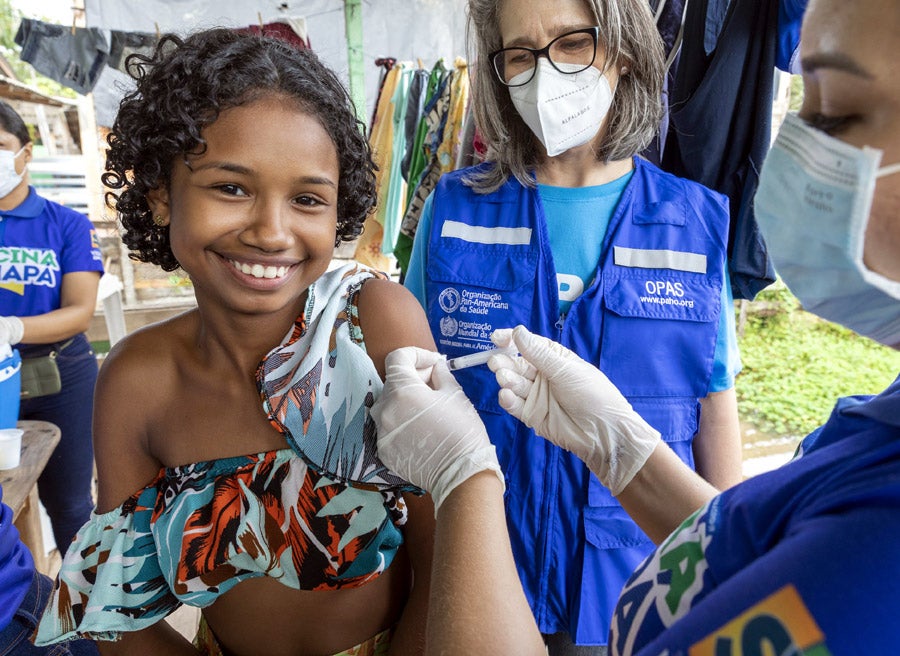 Public–private partnerships can help provide essential resources, drive innovation, and enhance local capacity. These partnerships ensure that vulnerable populations have access to affordable health interventions, promote long-term sustainability, and foster multisectoral collaboration. Additionally, the private sector's role in supply chain management, innovative health technology, workplace health programs, and community engagement extends the reach and effectiveness of disease elimination strategies and can help address inequities. By leveraging the strengths of both public and private sectors, public–private partnerships enable countries to implement comprehensive and integrated solutions, securing the political and financial commitments needed to achieve lasting public health impact across the Americas.
Public–private partnerships can help provide essential resources, drive innovation, and enhance local capacity. These partnerships ensure that vulnerable populations have access to affordable health interventions, promote long-term sustainability, and foster multisectoral collaboration. Additionally, the private sector's role in supply chain management, innovative health technology, workplace health programs, and community engagement extends the reach and effectiveness of disease elimination strategies and can help address inequities. By leveraging the strengths of both public and private sectors, public–private partnerships enable countries to implement comprehensive and integrated solutions, securing the political and financial commitments needed to achieve lasting public health impact across the Americas.
What is currently being done?
PAHO employs a flexible approach to partner engagement to leverage the best expertise, evidence, and information available. One example of an effective public–private partnership is the Onchocerciasis Elimination Program for the Americas, whose partners include national governments, PAHO and other health organizations, academic institutions, public and private foundations, and the pharmaceutical company Merck & Co, Inc. Through health education and mass administration of the drug ivermectin, the program has successfully eliminated transmission in 11 of 13 endemic areas. Due to the program's success, 94% of people originally requiring treatment no longer need it, and four of the six participating countries (Colombia, Ecuador, Guatemala, and Mexico) are now free of the disease (41). Another example is the recommendations adopted at the 17th Inter-American Ministerial Meeting on Health and Agriculture in 2016, which emphasized the importance of intersectoral collaboration between health, agriculture, and environment sectors to address zoonotic diseases, food safety, and antimicrobial resistance (42). Also, IMT and the RRFs are working to expand manufacturing capacities for vaccines and other health technologies in the Region.
How can countries accelerate progress?
Evidence has shown that public–private partnerships can help facilitate access to primary health care services, especially in remote areas, which are key to disease elimination efforts. PAHO and Member States can consider additional partnerships and should consider sustainable plans and policies with private stakeholders, while carefully considering local needs and contexts (43).
 © PAHO
© PAHO
Approach: Civil society engagement
Why is this important?
Civil society brings local knowledge to health initiatives, enhancing the effectiveness and cultural appropriateness of interventions. This engagement can be more cost-effective than top-down approaches, ultimately leading to better long-term health outcomes. Local communities can help plan and implement programs most effectively in their own contexts. Developing capacity among civil society groups to enhance their role in disease elimination efforts can help strengthen their sense of ownership and their ability to participate effectively, which can eventually lead to more sustainable and impactful interventions.
What is currently being done?
The revised Essential Public Health Functions (EPHF) framework helps strengthen multisectoral participation and civil society's role in health decision-making. Since its launch in 2020, several countries in the Region have implemented the EPHF. For example, several Caribbean countries, including Saint Kitts and Nevis and Saint Vincent and the Grenadines, completed EPHF assessments and incorporated sections on the EPHF into national strategic health policies.
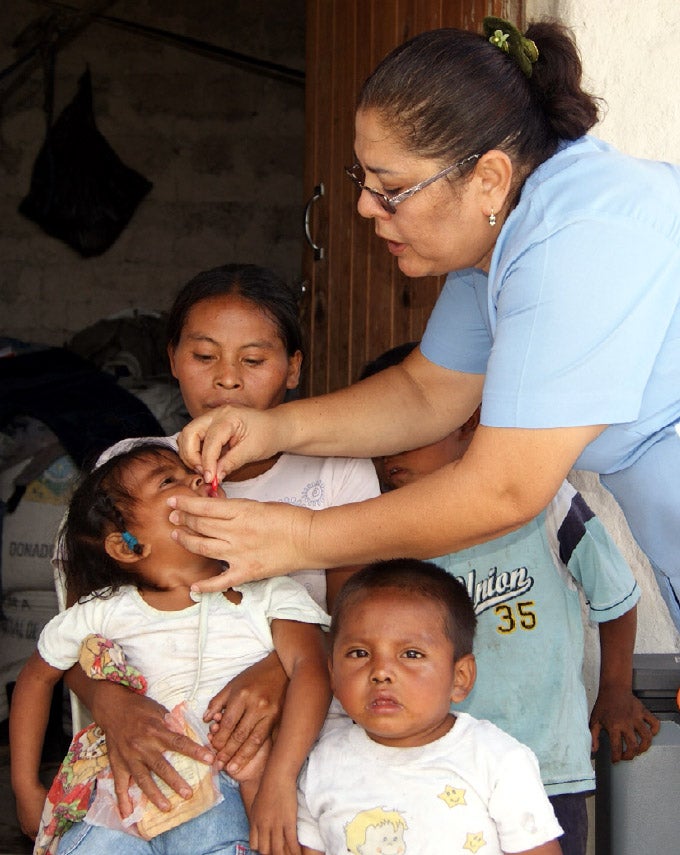 PAHO has also supported and fostered social participation and intersectoral work at all levels of decision-making – for example, PAHO and WHO have organized the Network on Intersectoral Work and Social Participation for Health Equity in the Americas. Another example is the Grupo de Cooperación Técnica Horizontal, created in 1996 by National AIDS Program Directors of Latin America. For the last few decades, it has included regional and subregional networks of civil society representing people living with HIV and key populations most affected by HIV infection. They a collaborate on capacity-building and advocacy virtual sessions, as well as periodic face-to-face meetings for technical exchange and political dialogue.
PAHO has also supported and fostered social participation and intersectoral work at all levels of decision-making – for example, PAHO and WHO have organized the Network on Intersectoral Work and Social Participation for Health Equity in the Americas. Another example is the Grupo de Cooperación Técnica Horizontal, created in 1996 by National AIDS Program Directors of Latin America. For the last few decades, it has included regional and subregional networks of civil society representing people living with HIV and key populations most affected by HIV infection. They a collaborate on capacity-building and advocacy virtual sessions, as well as periodic face-to-face meetings for technical exchange and political dialogue.
The Plurinational State of Bolivia's SAFCI policy, established in 2008, also demonstrates effective civil society engagement and has shown success through its community approach integrating biomedical and Indigenous practices. For instance, the program introduced the HPV vaccine in 2017 using a range of community-focused approaches – including peer-to-peer information-sharing, community-based immunization promotion, and unified messaging. This approach led to high vaccine coverage and low dropout during the introduction (44).
How can countries accelerate progress?
Scaling up civil society engagement across the Region is important for disease elimination. Evidence shows the positive impact of community engagement on communicable disease control on health issues like HIV, STIs, malaria, tuberculosis, and maternal and child health (45). While specific community engagement methods need to be tailored for the context, strategies designed with and for individual communities can better enhance education and awareness and build local capacity. Using flexible, community-driven approaches is key for allowing civil society to lead engagement efforts while ensuring these initiatives are responsive to the unique needs and contexts of each community. Encouraging co-creation of strategies with civil society can foster stronger collaboration and more sustainable outcomes.
References
- Pan American Health Organization. Fact Sheet: EMTCT PLUS Initiative 2011–2021. Essential intervention for the prevention of MTCT early childhood transmission of hepatitis B. Washington, D.C.: PAHO; 2022. Available from: https://www.paho.org/en/documents/fact-sheet-emtct-plus-initiative-2011-2021-essential-intervention-prevention-mtct-early.
- Pan American Health Organization. Belize, Jamaica and St. Vincent and the Grenadines eliminate mother-to-child transmission of HIV and syphilis. Washington, D.C.: PAHO; 2024. Available from: https://www.paho.org/en/news/7-5-2024-belize-jamaica-and-st-vincent-and-grenadines-eliminate-mother-child-transmission-hiv.
- Pan American Health Organization. Suriname enhances malaria surveillance with specialized capacity building for community health workers. Washington, D.C.: PAHO; 2023. Available from: https://www.paho.org/en/news/30-11-2023-suriname-enhances-malaria-surveillance-specialized-capacity-building-community.
- Pan American Health Organization. Community health workers on the frontline of Haiti's cholera response. Washington, D.C.: PAHO; 2022. Available from: https://www.paho.org/en/stories/community-health-workers-frontline-haitis-cholera-response.
- Pan American Health Organization. Building resilient health systems to advance toward universal health in the Americas: lessons from COVID-19. Washington, D.C.: PAHO; 2022. Available from: https://iris.paho.org/handle/10665.2/56444.
- Espinosa LM. Pandemia aceleró uso de la telesalud y se lograron más de 100 millones de citas virtuales. La Republica. 25 May 2021: Salud. Available from: https://www.larepublica.co/especiales/la-salud-despues-del-covid/la-pandemia-acelero-el-uso-de-la-telemedicina-3175267.
- Ver Federación Latinoamericana de la Industria Farmacéutica. Recorrido por la telemedicina en América Latina. Mexico City: Fifarma; 2020.
- Camacho-Leon G, Faytong-Haro M, Carrera K, Molero M, Melean F, Reyes Y, et al. A narrative review of telemedicine in Latin America during the COVID-19 pandemic. Healthcare. 2022;10(8):1361. Available from: https://doi.org/10.3390/healthcare10081361.
- Winny A. Chagas: the most neglected of neglected tropical diseases. Baltimore: Johns Hopkins Bloomberg School of Public Health; 2022. Available from: https://publichealth.jhu.edu/2022/chagas-the-most-neglected-of-neglected-tropical-diseases.
- Nogueira-Rodrigues A, Flores MG, Macedo Neto AO, Braga LAC, Vieira CM, de Sousa-Lima RM, et al. HPV vaccination in Latin America: coverage status, implementation challenges and strategies to overcome it. Front Oncol. 2022;12:984449. Available from: https://doi.org/10.3389/fonc.2022.984449.
- Pan American Health Organization. Increasing production capacity for essential medicines and health technologies. [Document CD59/INF/8]. 59th PAHO Directing Council, 73rd Session of the Regional Committee of WHO for the Americas; 20–24 September 2021. Washington, D.C.: PAHO; 2021. Available from: https://www.paho.org/en/documents/cd598-increasing-production-capacity-essential-medicines-and-health-technologies.
- Pan American Health Organization. Performance monitoring tool for the national expanded program on immunization - spreadsheet. Washington, D.C.: PAHO; 2024 [cited 16 September 2024]. Available from: https://www.paho.org/en/documents/performance-monitoring-tool-national-expanded-program-immunization-spreadsheet.
- Pan American Health Organization. Countries approve policy to strengthen regulatory systems for medicines and other health technologies in the Americas. Washington, D.C.: PAHO; 2022. Available from: https://www.paho.org/en/news/29-9-2022-countries-approve-policy-strengthen-regulatory-systems-medicines-and-other-health.
- World Health Organization. Water sanitation and health: WASH and neglected tropical diseases. Geneva: WHO; 2023 [cited 16 September 2024]. Available from: https://www.who.int/teams/environment-climate-change-and-health/water-sanitation-and-health/burden-of-disease/ wash-and-neglected-tropical-diseases.
- World Vision International. Why water matters in HIV/AIDS. Monrovia, CA: World Vision; [no date] [cited 16 September 2024]. Available from: https://www.wvi.org/clean-water-sanitationand-hygiene-wash/why-water-matters-hivaids.
- Gaspard J, Usey MM, Fredericks-James M, Sanchez-Martin MJ, Atkins L, Campbell Jr. CH, et al. Survey of schistosomiasis in Saint Lucia: evidence for interruption of transmission. Am J Trop Med Hyg. 2020;102(4), 827-831. Available from: https://doi.org/10.4269/ajtmh.19-0904.
- Garn JV, Wilkers JL, Meehan AA, Pfadenhauer LM, Burns J, Imtiaz R, Freeman MC. Interventions to improve water, sanitation, and hygiene for preventing soil-transmitted helminth infection. Cochrane Database Syst Rev. 2022 Jun 21;6(6):CD012199. Available from: https://doi.org/10.1002/14651858.cd012199.pub2.
- World Health Organization. Ending the neglect to attain the sustainable development goals: a global strategy on water, sanitation and hygiene to combat neglected tropical diseases, 2021–2030. Geneva: WHO; 2021. Available from: https://iris.who.int/handle/10665/340240.
- Pan American Health Organization. Herramientas para el monitoreo de coberturas de intervenciones integradas de salud pública: vacunación y desparasitación para las geohelmintiasis. Washington, DC: PAHO; 2017. Available from: https://iris.paho.org/handle/10665.2/34511.
- Pan American Health Organization. Countries of the Americas agree to increase genomic sequencing to detect potentially pandemic pathogens. Washington, D.C.: PAHO; 2022. Available from: https://www.paho.org/en/news/28-9-2022-countries-americas-agree-increase-genomic-sequencing-detect-potentially-pandemic.
- Chame M, Barbosa HJC, Gadelha Jr LMR, Augusto DA, Krempser E, Abdalla L. SISS-Geo: leveraging citizen science to monitor wildlife health risks in Brazil. J Healthc Inform Res. 2019; 3(4):414–440. Available from: https://doi.org/10.1007%2Fs41666-019-00055-2.
- Pan American Health Organization. Factsheet: drug-resistant tuberculosis in the Americas Region 2022. Washington, D.C.: PAHO; 2022. Available from: https://www.paho.org/en/ documents/factsheet-drug-resistant-tuberculosis-americas-region-2022.
- Pan American Health Organization. Plan of action on antimicrobial resistance: final report [Document CD59/INF/10]. 59th PAHO Directing Council, 73rd Session of the Regional Committee of WHO for the Americas; 20–24 September 2021. Washington, D.C.: PAHO; 2021. Available from: https://www.paho.org/en/documents/cd59inf10-plan-action-antimicrobial-resistance-final-report.
- Pan American Health Organization. Latin American and Caribbean Network for Antimicrobial Resistance Surveillance - ReLAVRA+. Washington, D.C.: PAHO; [no date] [cited 16 September 2024]. Available from: https://www.paho.org/en/topics/antimicrobial-resistance/latin-american-and- caribbean-network-antimicrobial-resistance.
- World Health Organization. Social determinants of health. Geneva: WHO; [no date] [accessed 14 September 2024]. https://www.who.int/health-topics/social-determinants-of-health.
- World Health Organization. Health inequality monitor: health equity assessment toolkit. Geneva: WHO; [no date] [accessed 14 September 2024]. Available from: https://www.who.int/data/inequality-monitor/assessment_toolkit.
- Pan American Health Organization and United Nations Sustainable Development Goals. Monitoring and analysis: monitoring of targets and their inequalities. Washington, DC: PAHO; [no date] [cited 16 September 2024]. Available from: https://opendata.paho.org/en/sdg3/ monitoring-and-analysis/monitoring-of-targets-and-their-inequalities.
- World Health Organization. Global tuberculosis report: tuberculosis in prisons. Geneva: WHO; 2023 [cited 14 September 2024]. Available from: https://www.who.int/teams/globaltuberculosis- programme/tb-reports/global-tuberculosis-report-2023/featured-topics/tb-inprisons.
- Pan American Health Organization. Health of the indigenous people in the Americas. [Document CD47/INF/18]. 47th PAHO Directing Council, 58th Session of the Regional Committee of WHO for the Americas; 25–29 September 2006. Washington, D.C.: PAHO; 2006. Available from: https://iris.paho.org/handle/10665.2/366.
- Pan American Health Organization. Intercultural, participatory approach key to ensuring health of Indigenous Peoples in the Americas. Washington, D.C.: PAHO; 2023. Available from: https://www.paho.org/en/news/8-8-2023-intercultural-participatory-approach-key-ensuringhealth- indigenous-peoples-americas.
- Pan American Health Organization. Integrating traditional midwives into Bolivia's health care system to promote culturally secure births and intercultural dialogue. Washington, D.C.: PAHO; 2022. Available from: https://www.paho.org/en/stories/integrating-traditional-midwivesbolivias- health-care-system-promote-culturally-secure.
- Pan American Health Organization. PAHO study sheds light on perceptions of COVID-19 vaccine among Colombian Indigenous communities. Washington, D.C.: PAHO; 2024. Available from: https://www.paho.org/en/news/24-5-2024-paho-study-sheds-light-perceptions-covid-19- vaccine-among-colombian-indigenous.
- Cruz HMC, Pelcastre-Villafuerte BE, Arenas-Monreal L, Ruiz-Rodríguez M. Concerted model of healthcare for Awá Indigenous of Nariño, Colombia. Int J Environ Res Public Health. 2022;19(19):12250. Available from: https://doi.org/10.3390%2Fijerph191912250.
- Pan American Health Organization. Tackling vaccine hesitancy with art and dialogue in Bolivia. Washington, D.C.: PAHO; 2023. Available from: https://www.paho.org/en/stories/tacklingvaccine- hesitancy-art-and-dialogue-bolivia.
- Pan American Health Organization. One Health. Washington, D.C.: PAHO; [no date] [cited: 14 September 2024]. Available from: https://www.paho.org/en/one-health.
- Pan American Health Organization. One Health: A comprehensive approach for addressing health threats at the human-animal-environment interface [Document CD59/9]. 59th PAHO Directing Council, 73rd Session of the Regional Committee of WHO for the Americas; 20–24 September 2021. Washington, D.C.: PAHO; 2021. Available from: https://www.paho.org/en/documents/cd599-one-health-comprehensive-approach-addressing-health-threats-humananimal.
- Pan American Health Organization. Climate change and health. Washington, D.C.: PAHO; [no date] [cited: 14 September 2024]. Available from: https://www.paho.org/en/topics/climatechange- and-health.
- Maciel ELN, Sanchez MN, Da Cruz AM, Neto DBC, Lima NVT. Brazil's pivotal moment in public health: establishing the Interministerial Committee (CIEDDS) for the Elimination of Tuberculosis and Socially Determined Diseases. Rev Soc Bras Med Trop. 2024;57:e006012024. Available from: https://doi.org/10.1590/0037-8682-0597-2023.
- Pan American Health Organization. El Salvador da un paso adelante en la iniciativa de Eliminación de las Enfermedades. Washington, D.C.: PAHO; 2024. Available from: https:// www.paho.org/es/noticias/16-2-2024-salvador-da-paso-adelante-iniciativa-eliminacionenfermedades.
- Pan American Health Organization. Honduras avanza hacia la eliminación de enfermedades. Washington, D.C.: PAHO; 2024. Available from: https://www.paho.org/es/noticias/12-7-2024- honduras-avanza-hacia-eliminacion-enfermedades.
- The Carter Center. Onchocerciasis Elimination Program for the Americas (OEPA). Atlanta: Carter Center; [no date] [cited 16 September 2024]. Available from: https://www.cartercenter. org/health/river_blindness/oepa.html.
- Pan American Health Organization. Recommendations of the 17th Inter-American Ministerial Meeting on Health and Agriculture: One Health and the Sustainable Development Goals. RIMSA17. 21-22 July 2016. Washington, D.C.: PAHO; 2016. Available from: https://iris.paho.org/ handle/10665.2/51520.
- Joudyian N, Doshmangir L, Mahdavi M, Tabrizi JS, Gordeev VS. Public-private partnerships in primary health care: a scoping review. BMC Health Serv Res. 2021;21(1):4. Available from: https://doi.org/10.1186/s12913-020-05979-9.
- Pan American Health Organization. Promoting immunization equity in the americas. intersectoral collaboration, civil society participation, and community engagement: Sucre, Bolivia (Plurinational State of). Washington, D.C.: PAHO; 2021. Available from: https://iris.paho. org/handle/10665.2/54186.
- Questa K, Das M, King R, Everitt M, Rassi C, Cartwright C, et al. Community engagement interventions for communicable disease control in low- and lower- middle-income countries: evidence from a review of systematic reviews. Int J Equity Health. 2020;19(1):51. Available from: https://doi.org/10.1186/s12939-020-01169-5.




